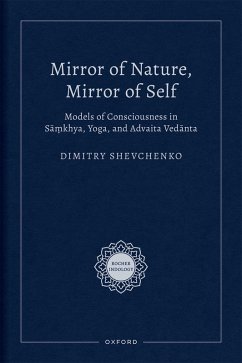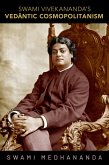In Indian philosophical traditions, a reflection in a mirror frequently serves as a metaphor, suggesting that just as a face in a mirror appears where it is not, so does consciousness. Mirror of Nature, Mirror of Self utilizes this metaphor to address metaphysical, epistemological, and theological problems within non-reductionist approaches to consciousness. Author Dimitry Shevchenko contends that consciousness and its properties--such as the sense of self, subjectivity, and experience of qualia--stand in falsely perceived relations to cognitive and perceptive processes. This book explores models of interaction between consciousness, the mind-body complex, and the world in the philosophical schools of S??khya, Yoga, and Advaita-Vedant. In a dialogue with psychoanalytical theory and analytic philosophy of mind, Shevchenko defends a new model of consciousness, integrating consciousness-mind dualism, mind naturalism, and representationalism about consciousness. Despite the overwhelming presence of pratibimbavadas, or "theories of reflection", in major philosophical traditions in India, they have received little scholarly attention. Mirror of Nature, Mirror of Self is the first systematic exploration of mirror models of consciousness across traditions. By grounding these theories in their historical intellectual context, Shevchenko contributes to an intense philosophical conversation between Indian reductionists and non-reductionists about consciousness. The book explores the impact of Indian mirror models on theories of mental representation, theories of knowledge, philosophy of language, debates on illusory causality and the relationship between noumena and phenomena, as well as soteriological and theological theories. Finally, by comparing mirror models of consciousness in Indian philosophy with Jacques Lacan's theory of the mirror stage and by engaging with theories of consciousness in analytic philosophy, this study contributes to contemporary debates across philosophical disciplines. This is an open access title. It is available to read and download as a free PDF version on the Oxford Academic platform. It has been made available under a Creative Commons Attribution-Non Commercial-No Derivatives 4.0 International licence.
Dieser Download kann aus rechtlichen Gründen nur mit Rechnungsadresse in A, B, BG, CY, CZ, D, DK, EW, E, FIN, F, GR, HR, H, IRL, I, LT, L, LR, M, NL, PL, P, R, S, SLO, SK ausgeliefert werden.









